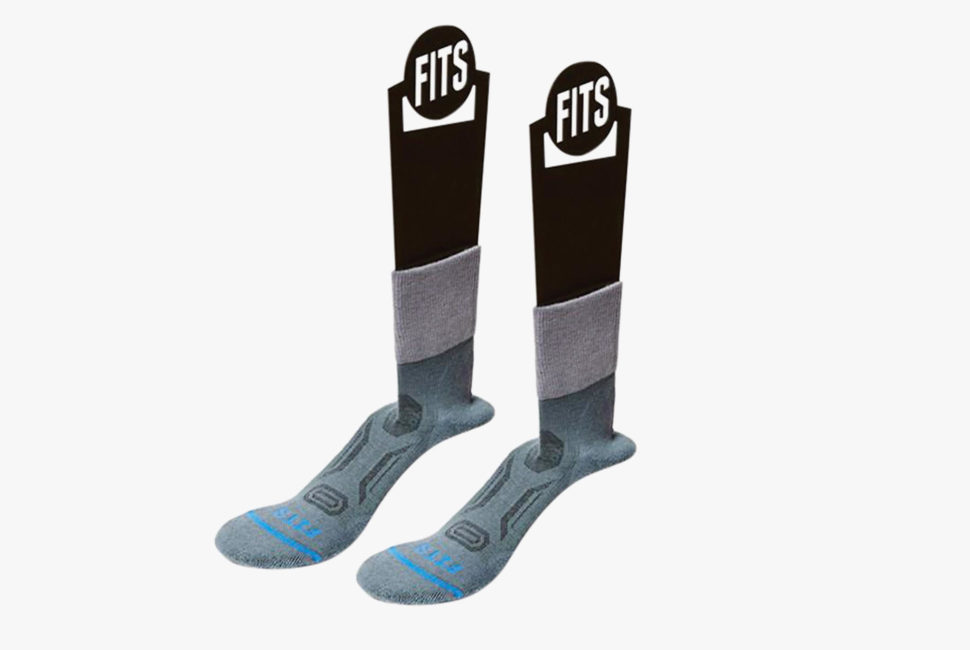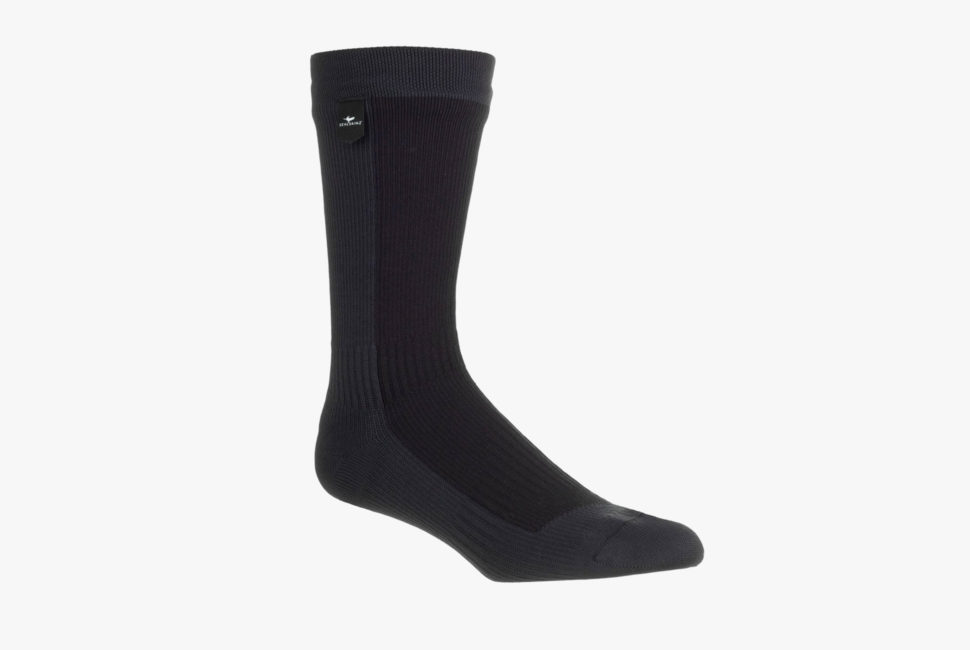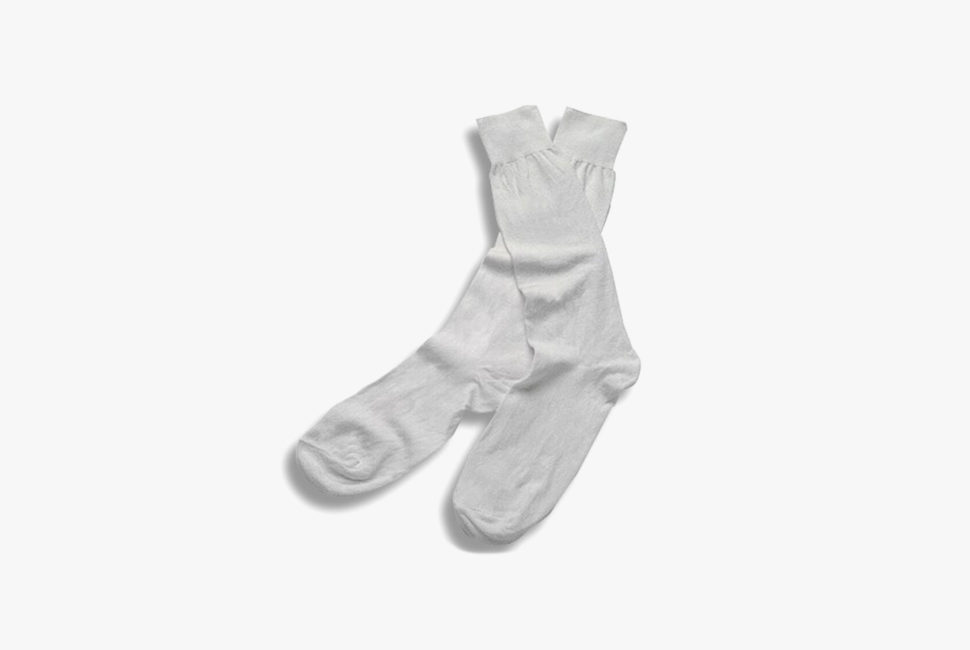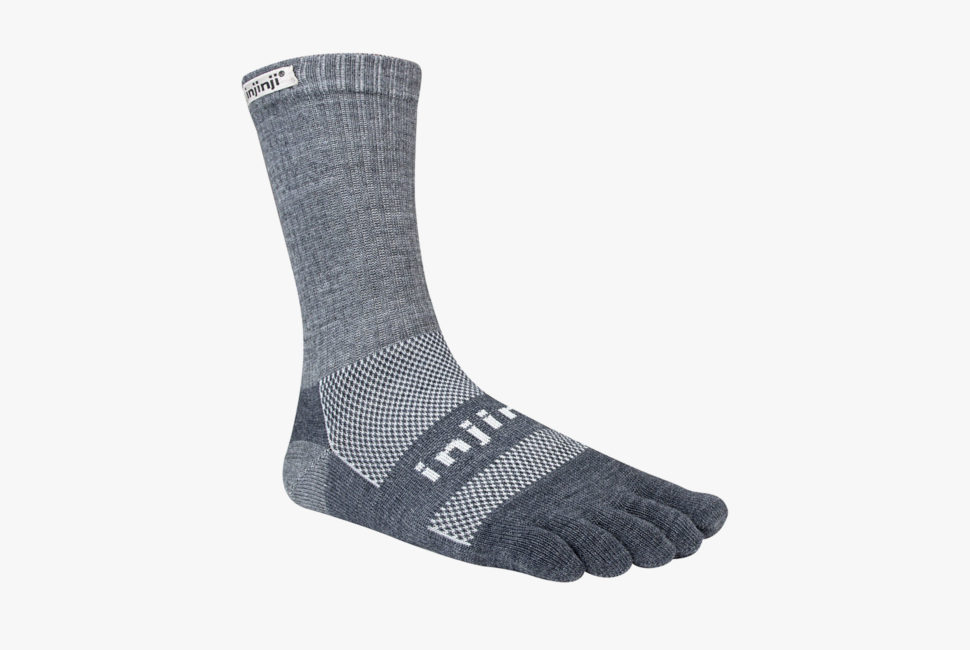A quality pair of hiking socks can make or break a day on the trail. Your feet are your most important tool when hiking. They’re your means of transportation, your method of travel and if they aren’t cared for and kept comfortable, hiking can quickly descend into the realm of misery. Hotspots, blisters and frostbite are all legitimate concerns. Thankfully, there’s never been a better time to buy hiking socks — there are more companies applying careful consideration and serious tech to their knits than ever before, and warm, soft, breathable materials like merino wool have become standard. It doesn’t matter whether you’re headed up to the local overlook for an afternoon or making a ten-day trek through Patagonia; you’ll need a good pair of hiking socks.
A Note on Price:
At first glance, hiking socks can seem expensive, especially compared to the cotton socks you may buy in packs of 12 for less than $10. But like all pieces of outdoor gear, hiking socks are designed to perform: to keep your feet warm while letting them breath, to prevent blisters and, of course, to be comfortable. Sock makers employ technical materials such as merino wool and construct each sock with hidden seams and hybrid knit patterns in order to create different levels of stretch. They also take careful consideration in applying compression to different areas of the foot. All of these things factor into the price of a decent pair of socks that are ready to take on the rigors of trail use; if you’re serious about getting outside, they’re well worth the extra cost.
Materials to Look For:
Merino Wool: Harvested from Merino sheep, it’s quick drying, static resistant, breathable and naturally antimicrobial, which means it doesn’t hold odors like polyester and cotton do. It’s also softer than traditional wool.
Nylon: Fibers made from durable, lightweight, synthetic polymers.
Spandex: A synthetic polyurethane-based fiber known for stretchability.
Elastane: A variant of “spandex.”
Polyester: A common plastic-based synthetic fiber that’s strong, light and shrink-resistant.
Silk: A natural fiber produced by insects. Silk is strong, soft, smooth and cool, but not very elastic.
Darn Tough Hiker Boot Sock Cushion

Best for Long-Distance Trekking: The hallmark of all Darn Tough socks is their unmatched durability. These socks last forever — and if for whatever reason they don’t, Darn Tough has a simple lifetime warranty that allows you to trade them in for a brand-new pair with few questions asked. But it’s not just that resilience that makes Darn Tough socks, and particularly the Hiker Boot Sock Cushion, great for multi-day and long-distance hiking — they’re comfy and warm, too. The Hikers are designed to be tall enough to accommodate supportive boots made for trekking and are knit with a merino wool blend so they’ll hold off going sour during long days on the trail.
Materials: 64% Merino wool, 33% nylon, 3% Lycra spandex
Cushion: Medium
Smartwool Trekking Heavy Crew Socks

Most Comfortable: Smartwool may be the biggest name in technical hiking socks. It’s no surprise that its plush trekking model, built with full cushioning to provide support over miles and miles, is also incredibly comfortable. The sock has a heathered look that’s iconic among hikers and it’s equipped with all the additional features a hiker needs: a flat and minimal toe seam, light compression around the arch and of course, a very healthy dose of merino wool.
Materials: 70% Merino wool, 29% nylon, 1% elastane
Cushion: Heavy
Stance Troops Hike

Best for Style-Conscious Hikers: Stance set out to reimagine the most boring article of clothing with an injection of creativity and style. In doing so Stance didn’t forget about technical features, and its Adventure Collection, introduced earlier this year, makes good on all three. The Hike is Stance’s mid-level outdoor sock. It’s constructed with a blend of wool, polyester, cotton and nylon and it’s engineered with targeted compression and cushion zones along with a mesh top for improved breathability. And of course, the Troops feature a wild tie-dyed stripe pattern you won’t find on any other hiking sock.
Materials: Merino wool, poly cotton, nylon
Cushion: Medium
Farm to Feet Damascus Lightweight Crew Socks

Best for USA-Made Buyers: To many people, origin is important. Farm to Feet, owned and operated by the Nestor Hosiery in North Carolina, may be the only company making hiking socks with a supply chain that’s 100% made in the United States. (Many other brands do build their finished products here with materials that are sourced abroad; most merino wool, for instance, comes from New Zealand and Australia.) The Damascus is a great example of what that supply chain can produce: a technical hiking sock with targeted cushioning and compression that’s ideal for hikes both long and short. It’s also available in a quarter-length model.
Materials: 57% Merino wool, 40% nylon, 3% Lycra spandex
Cushion: Light
FITS Light Performance Trail Quarter

Best for Speed Hiking and Trail Running: You can’t really go wrong with FITS socks — every pair is incredibly comfortable and hard-wearing. But when it comes to ticking off the miles as fast as possible, its new Light Performance Trail sock is unbeatable. The sock features a slightly taller hybrid cuff that’s built out just enough to guard your ankles (and shoe interior) against sticks, rocks, snow and any other debris you might kick up as you make your way towards your destination. Beyond that, these socks fit incredibly well (as if the brand name couldn’t have been more of a clue to that); they hug the foot snugly without feeling restrictive and breath well with venting on the top of the foot.
Materials: 50% merino wool, 40% nylon, 7% polyester, 3% Lycra
Cushion: Hybrid; extra cushioning on toe, arch, heel and ankle cuff
SealSkinz Hiking Mid Socks

Best Waterproof Sock: In most cases, waterproof socks are overkill. But when spending prolonged amounts of time exploring bogs, fens and streams, wet feet are an inevitability — so a waterproof hiking sock can be your best friend. SealSkinz’s 100 percent waterproof hiking sock is also windproof and, miraculously, breathable. It’s built with a nylon and elastane outer, a hydrophilic membrane and an inner that blends merino wool with acrylic and nylon, as well as other materials.
Materials: Outer: 90% nylon, 10% elastane
Inner: 35% merino wool, 35% acrylic, 23% polyester, 3.5% elastane, 3.5% nylon
Cushion: Medium
REI Co-op Silk One Liner

Best Liner Sock: Liner socks are divisive; either you like them or you don’t. Liners are thin, lightweight socks typically worn as a layer underneath regular hiking socks. Their purpose is to keep your feet dry by wicking away moisture and to prevent blisters by reducing the friction on your skin with an added layer. As with any layering system, everyone has a personal system and there’s no solution to suit all hikers, but if you are thinking of trying a liner, REI’s silk and nylon model is a solid place to start.
Materials: 55% spun silk, 44% nylon, 1% spandex
Cushion: None
Injinji Outdoor Midweight Weight Crew NuWool

Best For Preventing Blisters: Yes, Injinji’s separated toe design is definitely different, but it’s also ideal for hiking. Separated toes mean less rubbing and friction from skin-to-skin contact, which in turn means fewer blisters. The style can feel strange at first, but doesn’t take long to get used to and is actually incredibly comfortable. Like any high-quality hiking sock, Injinji’s is constructed with supportive arch compression, a mesh top and, yet again, merino wool. If you can’t get past the look, just remember: once your feet are in your boots, nobody will know any better.
Materials: 64% NuWool, 33% nylon, 3% Lycra
Cushion: Medium
Wigwam Merino Wool Comfort Hiker

Best Affordable Option: For a piece of clothing that’s so easily forgotten (and lost in the wash), hiking socks are expensive. But they’re also essential. That high price tag is a result of the technical materials and processes that go into making socks that are suitable for a lifetime of trail use. Wigwam has been making socks in Wisconsin for over 100 years, and its Merino hiking socks are a solid set that will meet most hikers’ needs mile after mile.




